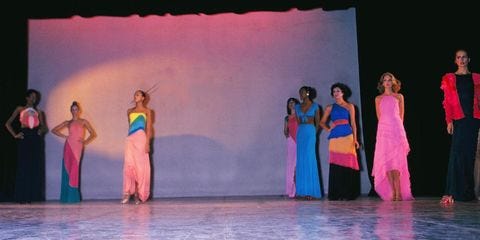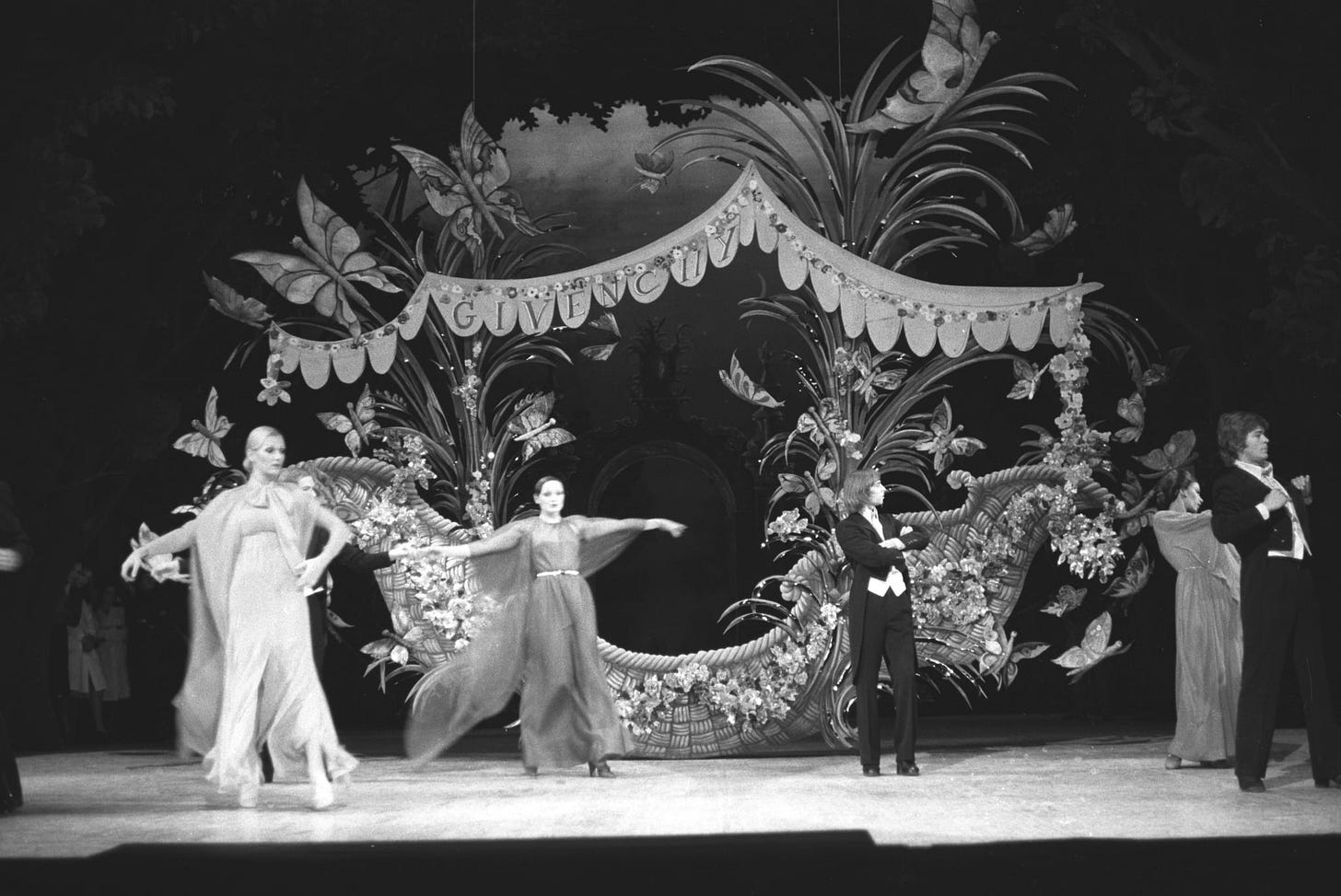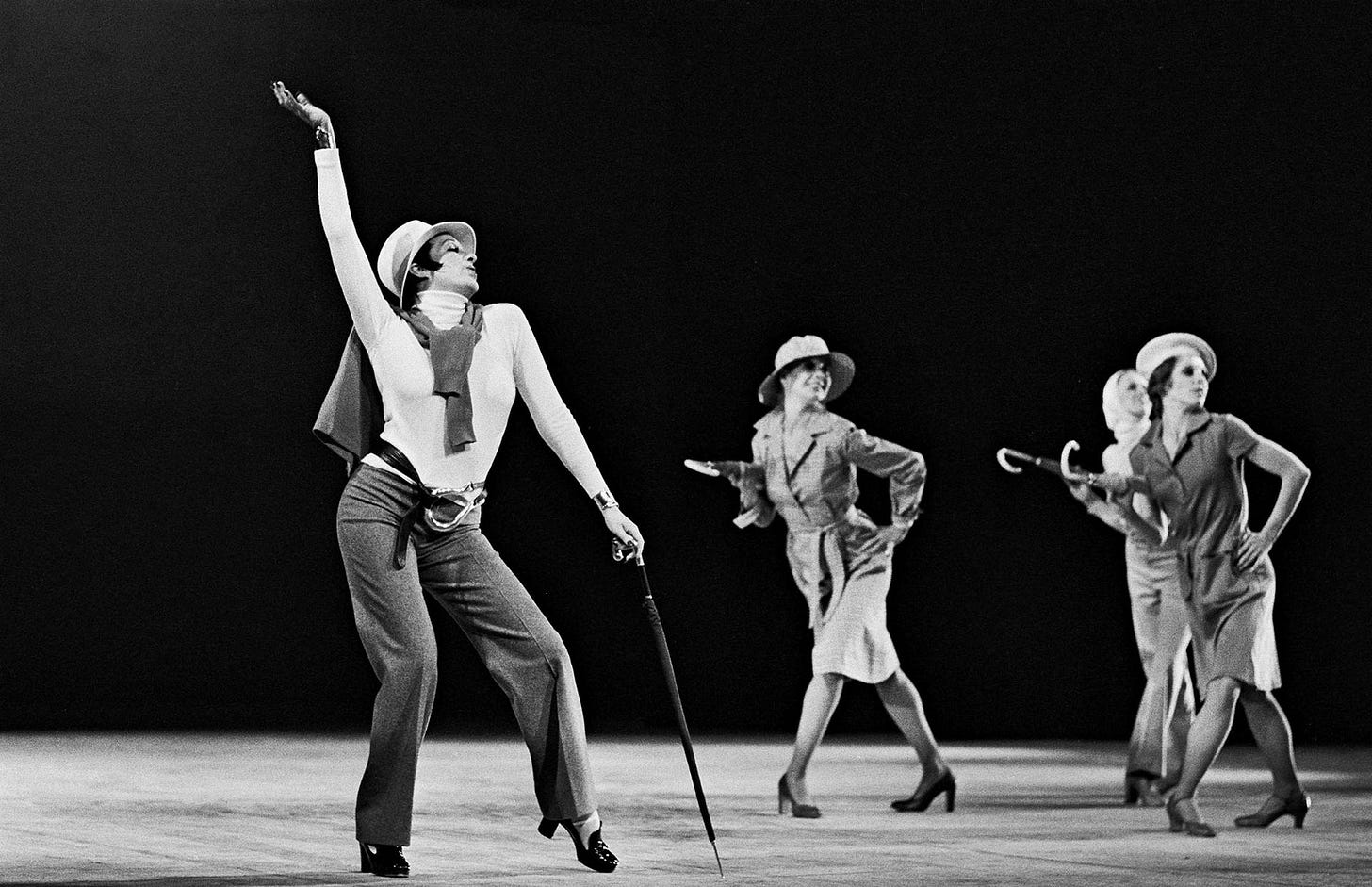Hello angel bbys. I wanted to start off by saying, thank you so much for all the feedback and support on making this a solely fashion newsletter. I’m SO excited for this ~journey~. ALSO, I would love for you to leave comments on things you’d like me to talk about, explain, review, etc. We love a collaborative work environment!
Anywaysssss, since last week we touched a little bit on haute couture, I thought this would be a cute segue. Whether you’ve watched a documentary about it or seen it fictionalized in Halston, The Battle of Versailles was a fashion show that will forever go down in history. So let’s get into it.
Created by Eleanor Lambert and Gerald Van der Kemp, the show was held on November 28, 1973 in the Palace of Versailles in order to raise money for its restoration. In it, five, French designers (Yves Saint Laurent, Pierre Cardin, Emanuel Ungaro, Marc Bohan, and Hubert de Givenchy) were pitted against five, American designers (Oscar de la Renta, Stephen Burrows, Halston, Bill Blass, and Anne Klein).
Each designer submitted eight designs, and the American designers really left their mark and set the stage for what was to come. In fact, a 1973 Women’s Wear Daily headline read, “Americans came, they sewed, they conquered.” Not only were their refreshing and youthful designs gag worthy for the primarily French audience, but they also used 10 black models, which at the time was unheard of (and let’s be real, could still use some work to this day). The models were Pat Cleveland, Alva Chinn, Billie Blair, Bethann Hardison, Jennifer Brice, Norma Jean Darden, Charlene Dash, Barbara Jackson, Ramona Saunders, and Amina Warsuma.
Funnily enough, the French spent THOUSANDS on the set designs that the did not fit the American’s backdrops and displays. There was a Halston tantrum, the French using up rehearsal time, small working conditions; American designers had to rely on last minute lighting, music, and choreography decisions to present their designs, and they still came out on top. John B. Fairchild called the French designers, “so tacky they weren’t even camp” while “the American mannequins knew how to move in the clothes they showed.” The American designers really put an emphasis on their designs and models, rather than focusing on super flashy sets and performances.
The Battle of Versailles sparked an international interest in fashion. It got people talking, created more opportunities for black models, elevated American labels, and brought vogueing to the world! This was the moment that American fashion changed. Not only in the approach of its designs, but also in its worldwide perception. It was also the moment when Paris started being viewed as a fashion capital.
Up until this point, the French were setting the trends, while the Americans were copying the French. But the Americans bringing 10 black models with them was incredibly notable, and spoke to what was going on at the time politically and socially. The Americans also used their ready-to-wear and sportswear designs to emphasize a women’s freedom to choose her own style. In iconic French houses, like Balenciaga, fashion shows were more serious and the models walked in silence or with music lightly playing the background. The Americans brought entertainment, they brought models that were emotive, they brought music that made people feel freedom and sexual independence.
According to attendees of the show, Stephen Borrows really made an impact; his designs even being complimented by Yves Saint Laurent. Borrows brought the DRAMA!!! with his models and showed that fashion inspiration can come from the streets.
The guest list included starlets and royalty; Liza Minelli, a close friend of Halston’s, was also in attendance and performed to open and close the American segment. Josephine Baker, a French entertainer and activist, opened for the French segment of the show before they continued to give a two and a half hour long presentation.
Although so many people felt like it was beneath them to have the Americans in attendance, the Battle of Versailles really garnered them respect from the rest of the world when it came to fashion. Mussolini might have, apparently, called her a bitch, but if there’s one things Eleanor Lambert was for sure, it’s a legend.
xx










Slowly but surely I will be memorizing these names, but cool lesson about this moment.